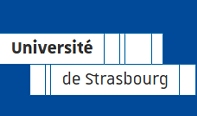Philipp J. Thurner "Micro- and nanomechanics of collagen rich-tissues and collagen fibrils"
Institute of Lightweight Design and Structural Biomechanics (ILSB), TU Wien, Austria
Tissues that provide passive mechanical function are generally rich in collagen and it is thought that collagens provide such tissues with stiffness and toughness. Macroscopically, relationships between tissue-structure, composition and mechanical function have been explored but comparatively little has been done in this context on the micro- and nanometer length scale. Yet, perhaps the most important basic structural building block of collagen-rich tissues can be found at these scales: the collagen fibril. Fibrils are rope-like with diameters in the range of tens to hundreds of nanometers and they have extremely high aspect ratios with lengths reaching up to tens of millimeters.
Mechanical properties at these levels is accessible due to continuous development of approaches based on atomic force microscopy or MEMS devices. Insights into tissue mechanics at these levels are not only interesting from a basic science perspective, but are also important for understanding changes due to age and disease. That is, they may offer targets for diagnostics and treatment of pathologies. Furthermore, micro- and nanomechanics can be useful to elucidate mechanobiological effects as cells sense their environment at this level.
In this context I will review some of the results obtained to date on this matter from our own research as well as from other groups, with a view for detailing structure-mechanical function relationships for individual collagen fibrils and collagen-rich tissue micromechanics in a systematic manner.
invited by Prof. Thorsten Hugel

